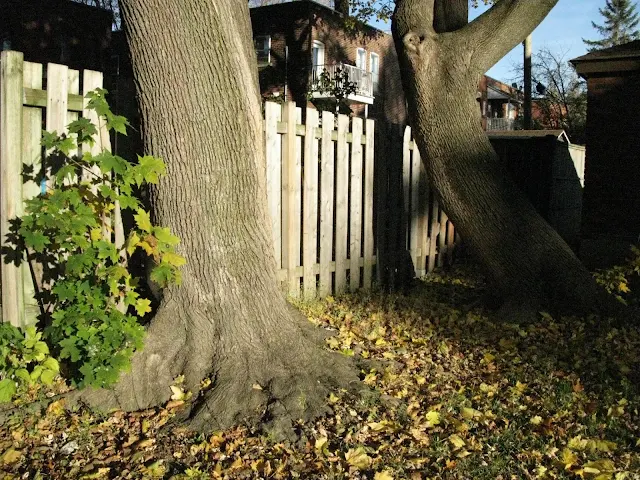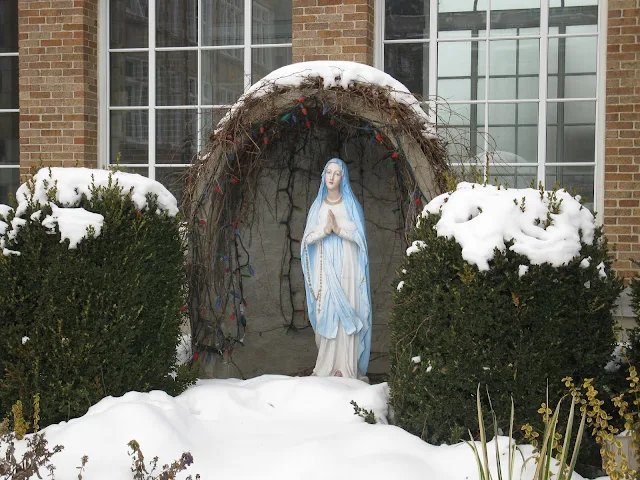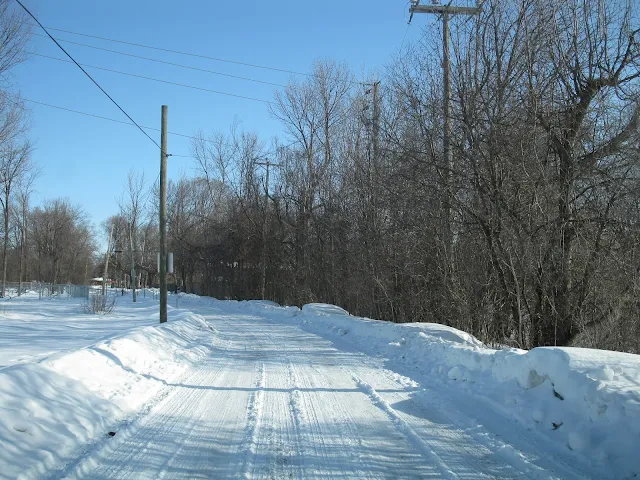Saturday, May 25, 2019
(Mostly) Anonymous in Inner Space
Thursday, May 16, 2019
A.M. Klein's "Heirloom"
 |
| Map of Montreal from 1910 |
1.
Looking through an old notebook from 2010 I found a poem I had written about the poet A.M. Klein. Then I remembered that in my first book of poems, The Trees of Unknowing (1978), I had a poem entitled "Heirloom"; when I was young I had been very impressed with Klein's poem of the same title. I wondered when it was that I wrote "Heirloom", probably sometime in the early 1970s but I thought it was much earlier. Then I also remembered that Sandra Goodwin, Bill Goodwin's widow, had told me that she grew up near where Klein lived; that was before Klein became a recluse due to mental illness and she and the other children in the street would greet Klein by saying "Good morning, Maitre Klein" ("Maitre" being the formal way to address a lawyer or notary in Quebec). Sandra was married to Bill Goodwin who was Irving Layton's nephew and best friend for eighty years; I knew Bill because I taught in the same English Department as him and when he retired he said he had retired so I could hold on to my job. Anyhow, I wondered where Klein had lived, I found two addresses in Lovell's Montreal City Directory, one on Clarke (in the Mile End neighbourhood) and one on Querbes in Outremont. The address on Querbes says his employment was as "Public relations counsellor Seagram's"; the Bronfmans certainly supported Klein, they were wonderful patrons of the arts. I taught Klein's "Heirloom" poem for many years; one day I reread my own "Heirloom" poem, it is almost an embarrassment when compared to Klein's.
2.
That generation of poets, Layton, Dudek, Smith, Scott, Klein, welcomed young poets, after all, who would want to be a poet? Bill Goodwin was Irving Layton's nephew but they were more like brothers. My mother lived on Montclair Avenue and, on occasion, I used to see Bill walking along Monkland Avenue on his way to Irving Layton's home on Monkland; that was in the 1990s when Irving wasn't well and Bill and several others looked after him, it was before Irving entered Maimonides long term care residence. Bill was very kind to me in so many ways; one day, soon after my son was born in January 1979, he phoned to say that it was too cold to take a baby outside, as my wife and I had planned, and he was right. Whatever Bill taught it included poems by Irving Layton and every year he would have Irving in to the college to give a reading. Some times after the reading I would get a lift downtown with them. Poets, like Irving Layton and Louis Dudek, focused on the young, especially if they were poets, so while Irving was talking in the front seat of the car he'd turn around and include me in the conversation. He was always polite and considerate. He'd ask what I was writing and show some interest, despite his famous enormous ego he was also concerned with mentoring young poets; Layton was a natural teacher. But that's what the older poets were like, it wasn't all prizes and ego, they mentored younger poets; it was a small community and anyone wanting to be a poet was treated with some respect. I mention this as it is an heirloom from those days when poets were few but they were dedicated to the Muse and to the life of being a poet.
Thursday, May 9, 2019
Leo Kennedy's "A Priest in the Family"
Friday, May 3, 2019
Dr. Peter Kennedy, son of Leo Kennedy
The following is the write-up on Amazon describing Dr. Kennedy's book:
Dr. Peter Kennedy, cum laude graduate of Harvard University and graduate with highest honors of Baylor Medical School, was formerly head of the Metropolitan Oncology Medical Group in Los Angeles. Dr. Kennedy describes his journey in medicine in his a medical memoir MEDICINE MAN: The Making of a Cancer Doctor.
Peter Kennedy wasn’t expected to live. Born premature with serious kidney defects, he seemed like a lost cause. Yet Kennedy survived, enduring multiple surgeries and going on to become a successful oncologist and medical researcher in the Los Angeles area.
The son of an Irish immigrant and a Jewish mother, both suffering from chemical dependencies, Kennedy grew up sickly in a tough Connecticut neighborhood. His transition to Minnesota athlete, leader, and outdoorsman during high school, and his acceptance at Harvard where he graduated with honors, was nothing less than miraculous. His success in medical school, and subsequent work as an instructor, scientist, medical researcher, and medical oncologist was the fulfillment of the American Dream.
Dr. Kennedy says, “Cancer currently strikes one in two men, and one in three women. It’s treated by ‘men in white coats’ which most people know only as fairly anonymous health providers. Over my career I’ve come to realize people need to understand that their doctors are people who have known strife, hardship, challenges. That we have different skill sets and varying approaches. Patients and families need to know this. In particular, cancer patients need to realize there’s a human behind the white coat who should be their partner in treatment. Through this book readers will see inside the system that trains doctors. They will meet doctors, understand how doctors themselves perceive their patients, and be more able to decide how and by whom they want to be treated. Nothing is more powerful for cancer patients than finding the right partner to provide them treatment, care, and comfort.”
Dr. Kennedy describes how incorporating alternative medicine into his practice helped him treat patients more effectively and details how accommodating cultural norms within specific Los Angeles ethnic communities helped him identify and gain early diagnosis for hundreds of cancer patients who might otherwise have gone untreated. He reviews how and why cancer must be treated as a “family illness” and why families and support structures are critical to extending life, and providing optimal quality of life to patients afflicted with cancer.
Dr Cary Presant, Clinical Professor of Medicine at the University of Southern California, Keck School of Medicine, says “Reading this excellent book shows how difficult it is to become a physician and fight disease as well as the medical system. Dr. Kennedy’s descriptions of his feelings about his patients are richly worded, and emphasize how important it is for each reader to find a dedicated, compassionate doctor like the author. I recommend it highly.” Dr. Presant is also past President of the California Division of the American Cancer Society, and Past President and Chairman of the Board of the Medical Oncology Association of Southern California.
Medicine Man takes readers on a journey through the American medical system and gives them information and insight that may well save their life or the life of someone they love. It is the perfect read for anyone currently undergoing cancer treatment or for anyone who is considering a career in medicine.
Tuesday, April 30, 2019
Thursday, April 18, 2019
"Good Friday" by A.J.M. Smith
 |
| My mother and I, Easter at St. Matthew's Church, 1957 |
Died one who had he willed
Could have dried up the wide sea
And the wind stilled,
He surrendered the ghost
His face was a faded flower,
Drooping and lost.
Targeted, heart and eye,
Struck, as with darts, by godhead
In human agony.
Could shatter if he willed
The sea and earth and sky
And them re-build,
Of the darkening sky
A chivalry more difficult—
As men to die,
Can this frail flesh return
That is not all unworthy of
The god I mourn?
Friday, March 22, 2019
Mary, Queen of the World
 |
| Statue of Mary on the psychology building at the Loyola campus of Concordia University. |
 |
| Detail of above. |
 |
Shrine to Mary on the Loyola Campus of Concordia University. |
 |
| Shrine to Mary on the Loyola Campus of Concordia University (summer). |
 |
| The following (above and below) are outside people's homes within walking distance of where I live. |



 |
| Statue of Mary on north side of Cote St-Luc Road just above Decarie Boulevard, near the Villa Maria (a private school). |
 |
| Procession for the Assumption of Mary, August 2018, on Coronation Avenue going to Ste-Catherine of Sienne Church on Somerled. (Photo two below) |
 |
| Night scene. |
Thursday, January 24, 2019
A.J.M. Smith of Chesterfield Avenue, Westmount
1.
I've been thinking about A.J.M. Smith's poetry lately, longer than "lately", maybe a few years and I'm still divided re. if I like it or not. Smith grew up on Chesterfield Avenue in Westmount and my friend Paul Leblond also grew up on Chesterfield, across the street from Smith, but that was thirty years later (long after Smith had moved down to the States). This reminds me that Paul's father, Dr. C.P. Leblond, who was head of the anatomy department at McGill, was famous for his discovery of stem cells. Up to a few years ago if you had a doctor educated at McGill they would have been at one time a student of Dr. C.P. Leblond. He didn't retire from McGill until the early 2000s and I remember Paul telling me of his visits, as a child, to his father's office in the Strathcona Anatomy and Dentistry Building. His office was two stories and had previously been the office of Dr. Hans Selye, famous for his studies of stress and distress. In 1943 Dr. Selye had commissioned Marian Dale Scott to paint a mural in his office and a few years after that this became Dr. Leblond's office. The mural is entitled "Endocrinology" and is 12' by 16', enormous. At any rate, as we all know, Marian Dale Scott's husband, F.R. Scott was good friends with A.J.M. Smith from the mid-1920s and they formed the Montreal Group of poets who brought modern poetry to Canada.
I write the date inside the book that I am reading and I see that I read A.J.M. Smith's On Poetry and Poets (NCL, 1977) in July 1980. The whole book is a fascinating discussion of Canadian poetry. In some ways it reminds me of John Sutherland's Essays, Controversies and Poems (NCL, 1972) but also of Louis Dudek's book reviews, criticism, and commentaries on poetry. In Smith's book there are two essays that need to be mentioned; the first is "The Confessions of a Compulsive Anthologist" written in 1976; this is about as autobiographical as you'll get from A.J.M. Smith and you can see his passion for poetry was present even when he was a high school student reading a poetry anthology under his desk. The second essay was given at the Foster Poetry Conference, it is "The Poet and the Nuclear Crisis" (1965). He concludes this essay by writing "it is the arts and the humanities, and particularly poetry, the most humane of all the arts, that can offer that education in sensibility and virtue that we must submit to if we are to live." That's the kind of passionate statement that leads me to read more of Smith's writing. In fact, passion is something we don't talk about these days, maybe passion sounds naïve and if so, then we need more passion among our poets. So, let's talk about something that people don't talk about anymore and that is passion, and passion includes enthusiasm and a sense of urgency regarding the importance of poetry. It is passion in a poet's work that changes people, it makes the reader realize he or she is in the presence of something greater than what is normally experienced. When I was seventeen years old and an apprentice poet I read Allen Ginsberg's statement that poets should "Scribble down your nakedness. Be prepared to stand naked because most often it is this nakedness of the soul that the reader finds most interesting." With this one statement Ginsberg changed my life. Where are the poets of passion today? There are no Earle Birneys, no Al Purdys or Dorothy Livesays, no Alden Nowlans or Gwendolyn McEwens. Where are the poets who change the reader's life because that is what real poetry does, it changes one's life. Our most passionate poet, Irving Layton, has become a solitary historical figure, a voice that is no longer listened to. Smith's passion makes his poetry and criticism worth returning to and reading.
NOTE: The conclusion of this was published on this blog in July 2019 under the title "A Reappraisal of A.J.M. Smith".
Thursday, November 8, 2018
Walking to Meadowbrook Golf Course
Sunday, November 4, 2018
An Inventory of Trees
 |
| November 2014 |
 |
| November 2014 |
 |
| November 2014 |
 |
| November 2014 |
 |
| May 2018 |
 |
| May 2018 |
 |
| March |
 |
| March |
 |
| March |
 |
| January |
 |
| Mid-November |
 |
| Mid-November |








































